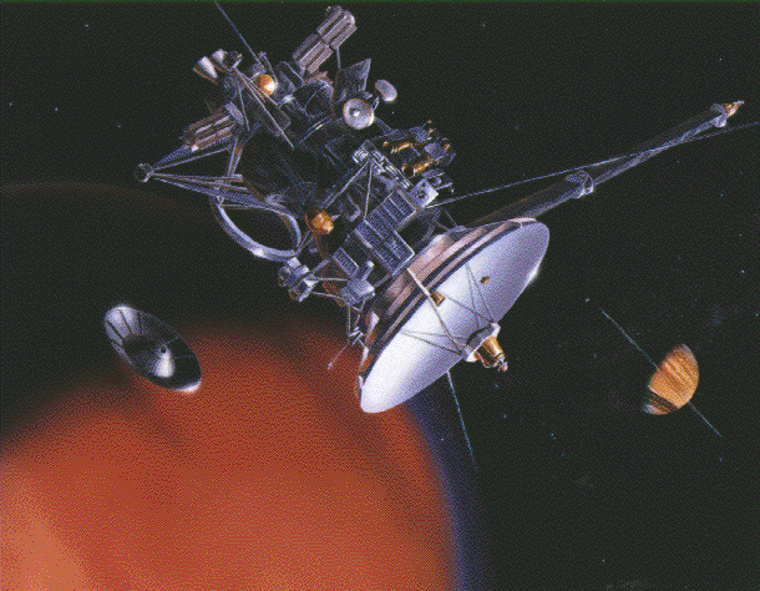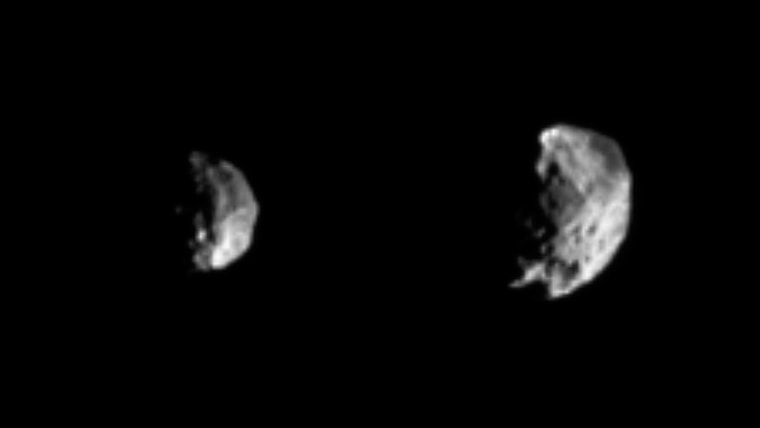Out so far in space that the sun is a tiny dot, the most sophisticated science spacecraft ever is nearing Saturn to begin a lengthy study of the ringed planet and its 31 known moons.
Nearly seven years after it left Earth, Cassini, an internationally built craft named for an early day astronomer, is on schedule to enter orbit June 30 after it dashes through a gap in Saturn’s shimmering rings. Scientists hope its findings will reveal new secrets about the evolution of our solar system.
Cassini had its first encounter with the Saturn system Friday afternoon, hurtling within 1,240 miles (2,000 kilometers) of the outermost moon, Phoebe. The tiny moon is just 137 miles (220 kilometers) across. Saturn, in contrast, is nearly 75,000 miles (120,000 kilometers) in diameter.
Scientists believe Phoebe originated in the outer reaches of the solar system and that it was later flung toward Saturn, which captured it into orbit.
“If it is, this will be our first encounter with something from that far out in the solar system,” said Carolyn Porco, one of the scientists leading the project.
“The study of the outer planets is of great importance to us because of what they represent: Saturn, its ring system, its moons, are a miniature model of a disk of gas and dust that surrounded the early sun as the planets formed in the solar system,” Orlando Figueroa, director of NASA’s Solar System Exploration Division, said during a recent briefing.
Saturn is the sixth planet from the sun, between bigger Jupiter and smaller Uranus. It was previously visited in flybys by NASA’s Pioneer 11 on Sept. 1, 1979, Voyager 1 on Nov. 12, 1980, and Voyager 2 on Aug. 25, 1981. But none of those visitors entered orbit around Saturn.
Seven-year journey
The $3.3 billion, U.S.-European spacecraft, which also carries a probe to explore the moon Titan, was launched in October 1997. NASA built the plutonium-powered spacecraft; the European Space Agency contributed the Huygens (pronounced Hoy’-genz) probe.

Cassini, weighing 5,384 pounds (2,447 kilograms), carries 12 science instruments; Huygens has six.
Once at Saturn, Cassini should spend at least four years in orbit. Its two cameras could take as many as half a million pictures.
“Cassini-Huygens is the most sophisticated scientific spacecraft launched to the planets,” Figueroa said.
In addition to studying the composition and structure of the planet itself and the moons, scientists want to learn more about the rings.
“Other giant planets do have rings also, but Saturn has the most spectacular rings,” said Charles Elachi, director of NASA’s Jet Propulsion Laboratory and team leader of Cassini’s radar instrument. “What we want to understand is, what are they made of, what’s their dynamic, how old they are, and, in a sense, to shed some light on how dust disks lead to the formation of planets.”
Tricky maneuvers ahead
Mission members caution that getting into orbit won’t be a cakewalk. Cassini must fire its engine on cue for 96 minutes to slow itself sufficiently and allow Saturn to pull it into orbit. If the maneuver fails, the spacecraft would sail past.
Cassini is set to release Huygens in December. A month later, scientists expect the probe to parachute through the murky atmosphere of Titan, Saturn’s largest moon, and land on its surface. Titan, larger than the planet Mercury, is the only moon in the solar system with an opaque atmosphere and is believed to resemble what the Earth was like several billion years ago.
“Titan may preserve in deep freeze many of the chemical compounds that preceded life on Earth,” Figueroa said.
Friday’s flyby of Phoebe is a warmup for what’s to come: Mission planners expect Cassini to conduct more than 50 similar flights past other Saturn moons, said Bob Mitchell, the mission’s program manager.
NASA this week released images of Phoebe taken by Cassini this month as it closed in on the moon. Cassini’s best possible pictures of Phoebe could show features as small as 66 feet (20 meters) across.
The mission is named for two 17th-century scientists, the Italian-French astronomer Jean Dominique Cassini and the Dutch scientist Christiaan Huygens.
